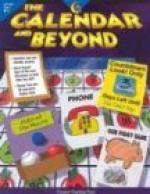|
This section contains 8,452 words (approx. 29 pages at 300 words per page) |

|
SOURCE: “The English Calendar in Colonial America,” in Bonfires and Bells: National Memory and the Protestant Calendar in Elizabethan and Stuart England, Wiedenfeld and Nicolson, 1989, pp. 190-206.
In the following essay, Cressy evaluates changes in the Protestant English calendar occasioned by its transfer to the New World.
The English calendar amalgamated astronomical, classical-pagan, and traditional Christian elements. In addition to marking the seasons and pacing the agricultural year, the calendar fixed and proclaimed the major Christian holy days, and registered such secular events as law terms, court days, times of fairs, and anniversaries. Lady day, May day, and Lammas marked the wheeling of the English year, alongside holidays with more specific religious connotations. … [M]any of the saints' days of the old Roman Catholic calendar were rejected after the Reformation, but still in the seventeenth century the calendrical cycle of Protestant England was modelled on that of Catholic...
|
This section contains 8,452 words (approx. 29 pages at 300 words per page) |

|


